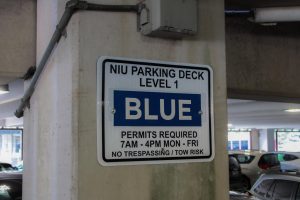Heroin becoming more common in suburbs, police
February 27, 2011
DeKALB | What was once believed to be a primarily metropolitan drug has emerged in the Chicago suburbs.
In the past 10 years, heroin has become a common drug in northern Illinois and Cook County.
According to a recent report by Roosevelt University, Cook County suburbs and surrounding counties had 23,931 people use emergency rooms for heroin-related problems from 2004 to 2008. That is 50 percent more than New York, which ranked second in the study.
Recently, the DeKalb police department arrested three suspects accused of selling and distributing heroin and cocaine. Lt. Gary Spangler said the frequency of heroin use in northern Illinois has been steadily rising.
“There are a lot of suburbs we work with that have had heroin issues,” Spangler said. “It’s really shocking sometimes.”
Will County Deputy Police Chief Ken Kaupas said they recently apprehended an individual carrying three kilos of heroin. He said Will County has seen an increase in heroin usage over the past three years, especially with high school kids.
“We spotted the trend a few years ago and noticed heroin showing up a lot more in smaller, rural communities,” Kaupas said. “They have been going up to the city and bringing it back down to sell.”
Kathleen Kane-Willis is the project director of the Illinois Consortium on Drug Policy for Roosevelt University and one of the researchers in the study. According to the report, heroin was prevalent in major cities with older African Americans, but she says the group of individuals using heroin has shifted.
“It seems to me there is an emerging group of young white users,” Kane-Willis said. “I’m working on a heroin prevention project, and there were very young people getting involved–like 14 and 15-year-olds.”
Kane-Willis said this mirrors many trends nationwide, and the problem has gotten bigger. Marijuana, prescription drugs and alcohol are still the most used, but she believes there is less education about heroin.
One of the solutions proposed by Kane-Willis was to increase education about heroin to young people. She says people do not think kids in suburbs use heroin, so the education on the drug stops there.
“In Illinois we don’t have good drug education programs, and even nationwide not many deal with heroin so it might just be seen as another drug of choice,” Kane-Willis said. “A lot of young people say to themselves, ‘it’s supposed to be bad, but is it just as bad as pot?’”
According to the National Institute on Drug Abuse, heroin causes a feeling of euphoric surge accompanied by dry mouth, a warm flushing of the skin, heaviness of the extremities and clouded mental functioning. After frequent use, organ failure ensues.
It is estimated that 23 percent of people become dependent on it after three tries, according to the National Institute on Drug Abuse.
Several heroin users, such as those from Palm Springs Drug and Alcohol Rehab in California, describe heroin as “all over body buzz,” or a “feeling of pure euphoria,” as described on their website. This is because once heroin enters the body, it is converted into morphine and mimics the effects of an endorphin, according to Palm Springs Rehab. After addiction, many have reported intense body aches, nausea and anxiety lasting up to a week.
One of the real fears with heroin is just how dangerous it is, and often times the first injection could be a person’s last, Spangler said.
“It’s a scary drug for what it can do to you,” Spangler said. “It’s very dangerous, and for a while there was a lot of tainted heroin that led to a lot of people dying.”
Another problem is the immense availability of heroin in Chicago and how inexpensive it is.
“People know to go to the West side,” Kane-Willis said. “In a sense it’s cheaper than a six-pack of beer.”






